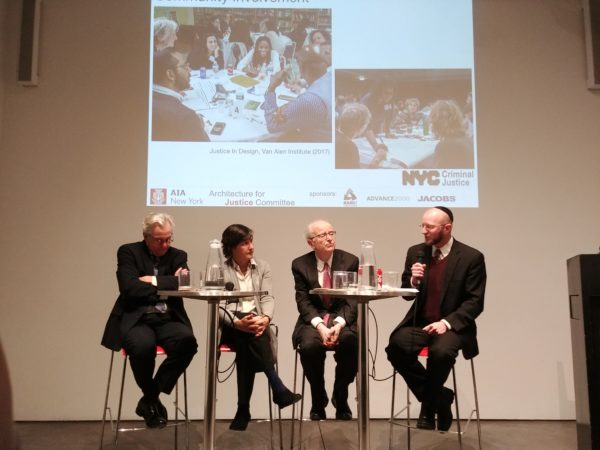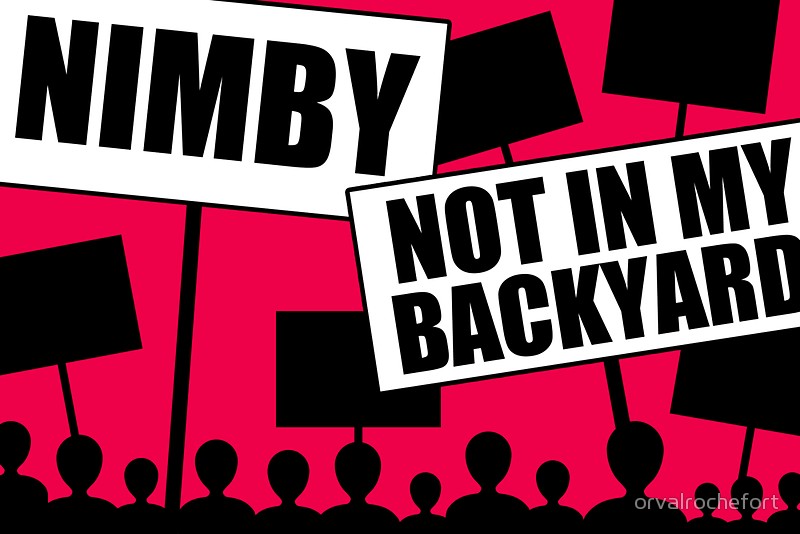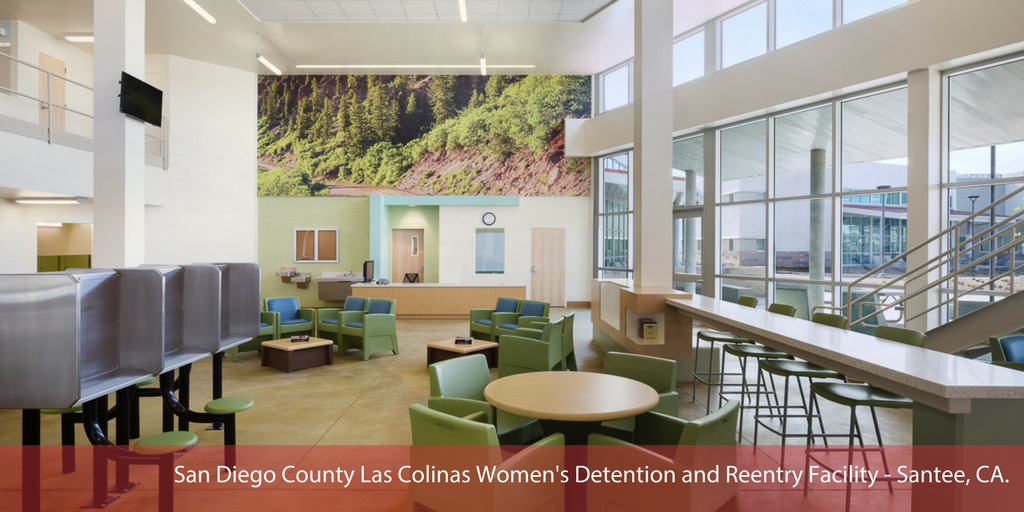
Expert Panelists Weigh In On the Future of NYC Jails
On December 6, the Architecture for Justice Committee of the American Institute of Architect’s New York Chapter hosted an event on “The Future of NYC Jails”, and an extremely qualified panel of experts on the subject gathered to discuss their visions and current plans.
The event was organized and moderated by CGL Justice Planning Expert Brett Firfer, AICP, who serves as Committee Co-Chair. Below, he recaps the key highlights and important takeaways from his discussion with the distinguished panelists.
***

(Left to Right) Martin F. Horn, John Jay College of Criminal Justice and former NYC Commissioner of Corrections; Elizabeth Glazer, Director of the Mayor’s Office of Criminal Justice; Hon. Jonathan Lippman, former Chief Judge of New York State and Chair of the Independent Commission on New York Criminal Justice and Incarceration Reform; Brett Firfer, Senior Associate at CGL)
Life After Rikers
New York City is on the verge of a new era in corrections: Life after Rikers Island.
With consensus from elected officials in New York that the jails on Rikers Island must be closed, a very sudden shift in wind from even just two years ago, the big questions now center around What next? and How long will it take to get there?
Martin Horn recounted key moments in the past 40 years of Rikers Island history, including past efforts to build or reopen jails in the City’s boroughs as a way to reduce the population on Rikers Island. During his time as Commissioner between 2006 and 2009, he attempted to enlarge and reopen the Brooklyn House of Detention, adjacent to the Brooklyn Criminal Courthouse in downtown Brooklyn.

Martin F. Horn
However, with a newly risen neighborhood growing up around these blocks, the City’s Comptroller gave in to NIMBYism and, with the support of local City Council representation, successfully fought against the plan. Attempts at building a 2,000-bed jail the Bronx’ Oak Point also came up against community and political opposition without advancing. But, as the panel pointed out, times and priorities have changed.

NIMBY – refers to opposition by residents to a proposed development.
The Lippman Commission
Whereas political battles by officials had been waged against community jails in the past, it was the current City Council Speaker who led the current charge to close Rikers Island and put together the Independent Commission on New York Criminal Justice and Incarceration Reform (“Lippman Commission”) to create a vision for doing so.

Hon. Jonathan Lippman
Highlighting the Lippman Commission’s goals is a vision for New York City’s future jails, which include concepts such as clustered housing, direct supervision, and an increased focus on program space and special populations. The concept ‘environment cues behavior’ is a central philosophy to the Commission’s perspective on how to approach jail planning and design. Reaching the Commission’s goals will require reducing the incarcerated population, achievable through crime prevention and jail diversion programs, bail reform, efficient case processing, and alternatives to jail sentencing.
Moving to the Boroughs
The City’s plans align with the Lippman Commission’s goal of ultimately closing the jail facilities on Rikers Island by reducing the inmate population and replacing Rikers with smaller community facilities. Elizabeth Glazer’s outlook on what should be planned and designed is also very much in line with the Commission’s recommendations for jail planning. New York City is looking to change the culture and purpose of a jail as a means for improving conditions for inmates and staff though best practices cited by Ms. Glazer, such as community integration, normalized environment, smaller facilities, and accommodation of restorative justice practices.

Elizabeth Glazer
Theory vs. Reality
Though there were differences between the panelists’ views of what could be, the majority of differing opinions seemed to revolve around what is truly possible (in theory) and what the City is willing to risk (in reality): Is it realistic to count on finding necessary real estate for a facility in Manhattan near the courthouses? Is it a winnable fight to build a jail in Staten Island in the face of local political resistance?
At the heart of these differences is the sense of urgency expressed by Judge Lippman, who reminds us that in four years New York City will have a new mayor and the political climate could change, which begged another question: Is it possible to get a shovel in the ground or a building built by then?

San Diego County Las Colinas Women’s Detention and Reentry Facility – Santee, CA
While Ms. Glazer did not share a hard timeline, she did show a process that learns from recently built facilities with a normative environment, such as San Diego’s Las Colinas Detention Center, and incorporates community-focused plans conceived as “justice hubs”. With sites in mind in Brooklyn, Queens, and the Bronx already – and the commission’s goal for “smaller, safer, and fairer” facilities – perhaps constituent by-in will be just what the City needs to ensure the process will have irresistible momentum no matter the timeline in reality.
Final Thoughts
Will the City be able to move forward to a future without jails on Rikers Island?
Mr. Horn pointed out the importance of language and terminology used. Replacing “jails” with terms like “justice centers” may help the City and elected officials stand a better chance at changing people’s perception of what justice buildings can be, and in turn change the culture within these buildings for those inside.
Overall, the panelists shared visions with a positive undercurrent that many remarked were inspiring. The City’s leaders recognize that the status quo does not work and the mental health population on Rikers is harmed by a system shaped in many ways by bricks and mortar. This discussion reflected a sincere understanding of best practices and a commitment to promoting positive outcomes.